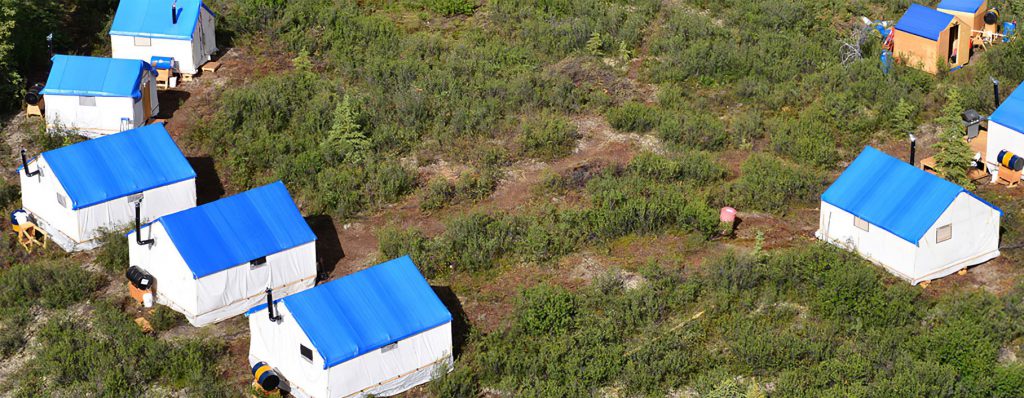Independence Gold drills Ian Vein System at 3Ts Project, British Columbia

Independence Gold Corp. [TSXV-IGO; OTCQB-IEGCF] reported assay results from the Ian Vein System from the spring drill program carried out at its 100%-owned 3Ts Project. The 3Ts Project is located approximately 185 km southwest of Prince George, British Columbia and is comprised of 17 mineral claims covering approximately 8,840 hectares in the Nechako Plateau region of central British Columbia.
It is situated 16 km southwest of Artemis Gold’s Blackwater Project and covers a low-sulphidation epithermal quartz- carbonate vein district within which more than a dozen individual mineralized veins, ranging from 50 metres to more than 1,100 metres in strike length, with true widths up to 25 metres, have been identified.
The spring drill program, consisting of 22 holes and totaling 5,130 metres, was designed to test several targets along the Ted-Mint and Tommy Vein Systems, both near surface and at depth below the sill. The program also tested early-stage exploration targets, including the Ian and Johnny veins, in order to generate additional drill data for incorporation into the current resource model.
The combined in-pit and underground components of the Tommy and Ted-Mint vein systems contain a total inferred resource estimate of 4,469,297 tonnes grading 3.64 g/t gold and 96.26 g/t silver, at a cut-off grade of 0.4 g/t gold equivalent (AuEq) in-pit and 2.0 g/t AuEq underground, containing 522,330 ounces of gold and 13,831,415 ounces of silver, or 687,156 AuEq ounces.
The Ian Vein System is a series of parallel quartz-carbonate veins that lie approximately 240 metres west of the Tommy Vein System. Two drill holes were completed during the 2024 spring program to test the Ian Vein System along strike and at depth below the original “discovery” hole (3TS-23-29) which intersected 6.10 g/t gold and 66.05 g/t silver over 6.98 metres.
Drill hole 3TS-24-13 was drilled approximately 40 metres northeast of drill hole 3TS-23-29 and drill hole 3TS-24-14 was designed to test the Ian Vein at depth below drill hole 3TS-23-29. One sample from drillhole 3TS-24-14 returned 131 g/t gold which is the highest assay for gold since work started at 3Ts in 1995. The main Ian Vein System has now been traced laterally for approximately 160 metres and to 115 metres below surface and remains open along strike and at depth.
Drill Hole 3TS-24-13 returned 5.00 metres of 7.16 g/t gold and 108.00 g/t silver for 8.24 g/t AuEq, including 1.00 metres of 17.35 g/t gold and 164.00 g/t silbver for 18.99 g/t AuEq and including 0.50 metres of 14.38 g/t gold and 332,00 g/t silver for 17.70 g/t AuEq and 0.68 metres of 20.25 g/t gold and 263.24 g/t silver 22.88 g/t AuEq and 2.00 metres of 2.22 g/t gold and 7.00 g/t silver for 2.29 g/t AuEq.
3TS24-14 returned 26.00 metres of 9.62 g.t gold and 65.42 g/t silver for 10.27 g/t AuEq, including 1,61 metres 97.17 g/t gold and 736.02 g/t silver for 104.53 g/t AuEq and including 3.00 metres of 10.54 g/t gold and 83.00 g/t silver for 11.37 g/t AuEq and including 0.50 metres of 20.86 g/t gold and 6.00 g/t silver for 20.92 g/t AuEq and including 1.00 metre of 13,72 g/t gold and 112,00 g/t silver for 14.84 g/t AuEq.
Randy Turner, President and CEO, commented, “We are very pleased with the drill results from the Ian Vein System. Not only does this drilling indicate high-grade gold and silver intercepts but the Ian Vein System appears to be increasing in both width and grade at depth and remains open along strike and at depth, giving us many targets for future drill programs. We look forward to incorporating the Ian Vein System into our current resource model.”
Following the lifting of an evacuation order issued due to a nearby wildfire, exploration work at the 3Ts will resume on August 8, 2024. All field personnel were safely evacuated and there was no damage to the camp or to the core storage. The summer field program includes regional mapping, airborne geophysics and trenching, including detailed exploration on the Ootsa copper-silver target which is located 1.2km north of the camp.
All drill holes completed to date have been sent to SGS lab in Vancouver for sample preparation and analysis.
